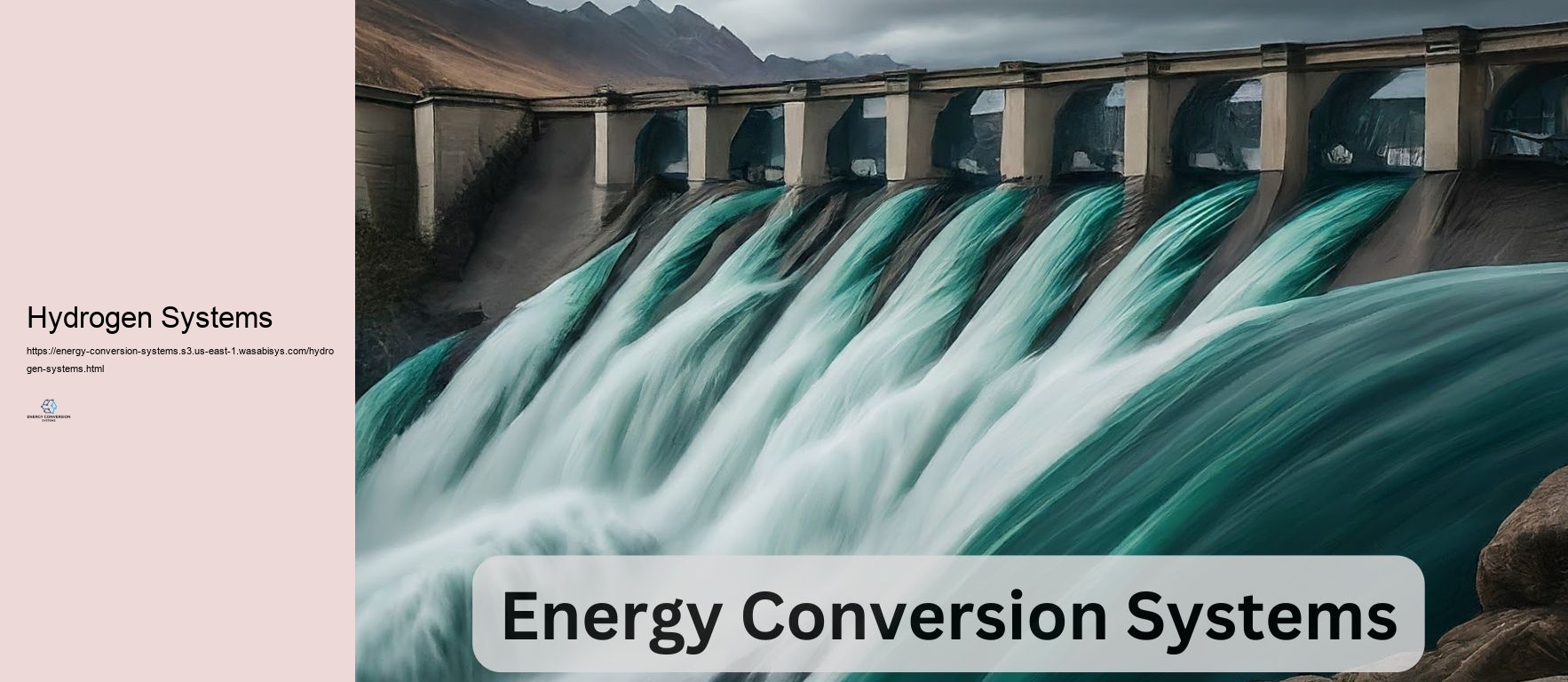

Energy conversion systems play a critical role in modern-day culture, making it possible for the makeover of different types of energy into more useful and useful kinds. These systems are basic to power generation, transportation, industrial procedures, and daily innovations. Understanding the principles and applications of energy conversion systems is crucial for designers, policymakers, and anybody thinking about the location of energy. Hydrogen Systems At its core, energy conversion is regulated by the regulations of thermodynamics. The very first regulation of thermodynamics, which defines that energy can not be generated or damaged yet only changed from one type to an additional, is the structure of all energy conversion systems. The 2nd legislation introduces the idea of worsening and performance, discussing why no energy conversion procedure can be 100% effective. These important concepts underpin the layout and procedure of all energy conversion systems. One of one of the most usual and significant energy conversion systems is the thermal nuclear power plant. These centers transform the chemical energy maintained in nonrenewable gas resources (such as coal, oil, or gas) or nuclear gas right into electric energy. The procedure generally requires melting the gas to warm water, producing heavy steam that drives a turbine linked to a generator. This system, based on the Rankine cycle, is an archetype of transforming thermal energy to mechanical energy and after that to electric energy. Modern thermal power plants usage different approaches to boost performance, such as supercritical heavy steam problems and mixed cycle systems. Renewable energy systems mean an additional essential team of energy conversion. Solar solar (PV) panels transform light energy directly into electrical energy with the photoelectric impact. Wind generators adjustment the kinetic energy of moving air right into power and after that right into electrical power. Hydroelectric power plants harness the prospective energy of water kept at elevation, transforming it to power with generators and after that to electric energy. Each of these systems has its special principles and obstacles, however all satisfy of transforming naturally taking place energy right into a lot more useful kinds. Internal burning engines, commonly utilized in transportation and some power generation applications, transform the chemical energy in gas right into mechanical energy with regulated explosions. These engines, whether fuel or diesel, operate thermodynamic cycles (such as the Otto cycle or Diesel cycle) that consist of compression, burning, growth, and exhaust stages. The effectiveness of these engines has actually been constantly improved through innovations in products, gas shot systems, and exhaust gas treatment technologies. Fuel cells represent an innovative energy conversion system that straight changes chemical energy into electrical energy without burning. These gizmos utilize electrochemical reactions to develop electrical energy, with hydrogen being an usual fuel. Gas cells have applications differing from portable source of power to huge dealt with power generation, and they offer the opportunity for high efficiency and reduced tires. Heatpump and refrigeration systems are energy conversion systems that move cozy from one location to an extra, properly changing electrical energy right into thermal energy transfer. These systems, which operate the vapor compression cycle or absorption cycle, are extensively utilized for home heating, cooling, and refrigeration in residential property, industrial, and business configurations. The efficiency of heatpump is often shared as a coefficient of performance (AUTHORITIES), which can be more than one, as they relocation warmth as opposed to create it directly. Electrochemical energy conversion systems, such as batteries and supercapacitors, play an important obligation in energy storage area and mobile power applications. These devices transform chemical energy right into electrical energy (during discharge) and the other way around (during billing). The concepts of electrochemistry govern their procedure, with recurring study concentrating on improving energy density, power thickness, and cycle life. Thermoelectric gadgets mean a distinct kind of energy conversion, right transforming temperature level distinctions into electric energy (Seebeck outcome) or using electric energy to create a temperature difference (Peltier impact). While currently restricted in performance, these solid-state gizmos have applications in waste warm recovery, cooling down systems, and area expedition. Magnetohydrodynamic (MHD) generators are an innovative energy conversion system that straight changes thermal energy right into electrical energy without relocating parts. By passing a high-temperature, electrically conductive liquid with an electromagnetic field, these systems generate power. While still considerably experimental, MHD generators hold pledge for high-temperature, high-efficiency power generation. The application of energy conversion systems extends throughout various fields. In the power generation industry, large-scale thermal, nuclear, and renewable resource systems supply electrical power to the grid. In transportation, internal melting engines, electrical motors, and arising innovations like gas cells power lorries. Industrial procedures count on a variety of energy conversion systems for home heating, a/c, and powering devices. In the residential or commercial property and business markets, COOLING AND HEATING systems, lights, and appliances all involve energy conversion. Performance enhancement is a continuous focus in the growth of energy conversion systems. This involves not simply enhancing the effectiveness of specific elements yet likewise boosting entire systems and incorporating different innovations. As an example, combined heat and power (CHP) systems enhance general energy use by capturing waste warm from electric power generation for home heating or industrial processes. The ecological influence of energy conversion systems is a gradually vital factor to consider.
Energy conversion modern innovations are at the forefront of changing just how we harness and use energy, playing a pivotal responsibility in the shift towards lasting and trusted energy systems. From photovoltaics to fuel cells, these developments consist of a varied selection of systems that change all-natural energy resources into valuable kinds, such as power, heat, and fuel. Each contemporary innovation operates on unique principles and is matched to specific applications, offering special advantages and obstacles. Comprehending these modern-day innovations is essential for progressing energy alternatives that solve international energy demands while minimizing environmental impact. Photovoltaics (PV) stand for one of the most thoroughly recognized types of solar power conversion. These systems use semiconductor items, typically silicon, to transform sunlight straight into electrical power through the photovoltaic or pv or pv impact. When sunlight strikes the surface area of a PV cell, it excites electrons, developing an electrical existing. Photovoltaic or pv or pv advancement has actually advanced significantly for several years, with innovations in products and layout bring about raised efficiency and minimized costs. Developing advancements, such as thin-film solar batteries and all-natural photovoltaics, are pressing the borders of efficiency and flexibility, making solar power much more readily available and versatile to different applications, from domestic roofs to large solar cattle ranches. Focused solar energy (CSP) is one more solar energy conversion contemporary innovation that varies from photovoltaics by using mirrors or lenses to emphasis sunlight onto a little location, normally a receiver. The focused light is exchanged warm, which is after that used to generate vapor that drives a generator linked to an electric generator. CSP systems are specifically efficient in locations with high right sunshine and can integrate thermal energy storage space options to supply power likewise when the sunshine is not radiating. This ability to keep energy as warm permits CSP plants to usage an added safe and credible power output contrasted to standard solar PV systems. Gas cells are a functional energy conversion technology that develops electrical power with an electrochemical reaction, typically consisting of hydrogen and oxygen. Unlike combustion-based power generation, fuel cells produce electric power without melting gas, leading to reduced wears down and higher performance. There are various sort of gas cells, each recognized by the electrolyte used and the operating temperature degree range. Polymer electrolyte membrane layer (PEM) gas cells, as an instance, are recognized for their high power density and are commonly utilized in transport applications, such as gas cell cars. Strong oxide gas cells (SOFCs), on the various other hand, run at greater temperature levels and are suitable for fixed power generation and business applications. Hydroelectric power is a reputable energy conversion modern technology that uses the kinetic energy of streaming water to generate electrical energy. By transmitting water via wind turbines, hydroelectric plants change the energy of relocating water right into mechanical energy, which is after that transformed right into electrical energy by generators. This modern innovation is very effective and can give a constant and respectable power supply, making it a foundation of renewable energy profiles in numerous nations.
Energy conversion systems are important to modern-day culture, playing a vital role in transforming raw energy resources right into useful power that gas homes, industries, and transportation. These systems include a wide range of modern technologies and treatments made to change energy from one type to one more, such as converting chemical energy in gas to power in engines or electric energy in nuclear reactor. A comprehensive analysis of the vital components in energy conversion systems divulges the complexity and course involved in properly using and taking advantage of energy sources. Understanding these parts is needed for optimizing efficiency, boosting efficiency, and lessening ecological influence. The beginning variable of any type of kind of energy conversion system is the energy resource, which can be environmentally friendly or non-renewable. Renewable energy sources consist of solar, wind, hydroelectric, geothermal, and biomass, while non-renewable resources incorporate nonrenewable fuel sources like coal, oil, and natural gas, together with atomic energy. The selection of energy resource considerably affects the design and treatment of the conversion system, as each resource has distinct attributes, such as access, energy density, and environmental impact. As an example, solar power systems rely upon solar batteries or solar thermal collection agencies to document sunlight, while fossil fuel-based systems use burning treatments to launch energy saved in chemical bonds. At the heart of any sort of energy conversion system is the energy conversion gizmo, which modifications the main energy resource right into a numerous type of energy. Usual conversion tools consist of turbines, engines, generators, and gas cells. Generators, used in both nonrenewable gas resource and renewable resource systems, convert kinetic energy from heavy steam, water, or wind into power, which is then transformed right into electrical energy by generators. Inner burning engines, usual in transport, convert chemical energy from gas right into power via regulated rises. Gas cells, on the different other hand, straight convert chemical energy from hydrogen or various other fuels right into electrical energy with electrochemical reactions, using high performance and low discharges. Heat exchangers are necessary parts in countless energy conversion systems, particularly those involving thermal processes. These gadgets aid with the transfer of warmth in between 2 or even more liquids without mixing them, enhancing the efficiency of energy conversion. In power plants, warmth exchangers are made use of to transfer warm from burning gases to water, generating heavy steam that drives generators. In heating and cooling down systems, they transfer warm between indoor and outside atmospheres, controling temperature and improving energy effectiveness. The style and product choice for warmth exchangers are vital for boosting warmth transfer rates and decreasing energy losses. Control systems are important for the risk-free and effective operation of energy conversion systems. They check and control many requirements, such as temperature degree, tension, blood circulation price, and voltage, making certain that the system runs within defined limitations and reacts accordingly to changes searched for or operating problems. Advanced control systems utilize sensing devices, actuators, and solutions to improve performance, enhance honesty, and minimize energy usage. In modern-day power plants, digital control systems allow real-time tracking and automation, allowing drivers to make data-driven decisions and perform expecting maintenance approaches. Energy storage room elements are increasingly essential in energy conversion systems, specifically those trusting recurring eco-friendly resources like solar and wind. Storage systems, such as batteries, flywheels, and pumped hydro storage space, shop excess energy generated throughout durations of reduced demand and launch it when need is high, making certain a steady and dependable power supply. The adaptation of energy storage space boosts the flexibility and sturdiness of energy systems, enabling far better tons monitoring and reducing dependence on fossil fuel-based back-up power. The growth of innovative storage modern innovations, such as lithium-ion and solid-state batteries, remains to drive renovations in energy thickness, performance, and cost-effectiveness. As quickly as energy is converted into a practical kind, it ought to be sent and distributed to end-users. Transmission and distribution systems consist of a network of transformers, high-voltage line, substations, and flow lines that supply electric energy from nuclear power plant to homes, organizations, and markets. Effective transmission and flow are essential for decreasing energy losses and making sure a trusted power supply. Technologies such as high-voltage straight existing (HVDC) transmission and creative grid technologies are enhancing the efficiency, ability, and stability of electric energy networks, assisting with the combination of renewable energy resources and boosting grid checking. Environmental control systems are essential to energy conversion systems, especially those entailing burning processes. These systems are established to reduce the eco-friendly influence of energy conversion by reducing exhausts of toxins such as sulfur dioxide, nitrogen oxides, particle matter, and co2. Technologies such as scrubbers, selective catalytic reduction (SCR), and carbon capture and storage room (CCS) are employed to document and take care of discharges prior to they are released into the environment. The application of environmental control systems is crucial for conformity with environmental guidelines and for reducing the effect of energy conversion on air premium quality and environment alteration. Improving the effectiveness of energy conversion systems is a crucial emphasis for reducing energy usage and ecological influence. Effectiveness enhancements can be established using numerous means, such as optimizing the layout and treatment of conversion gadgets, executing ingenious products and surfaces, and incorporating waste heat recuperation systems. Incorporated cycle nuclear power plant, which use both gas and heavy vapor wind generators, exhibit efficiency improvements by capturing and making use of waste warm from gas wind turbines to produce added electric energy. Continuous {research and development efforts stay to take a look at new materials, modern technologies, and processes that can a lot more boost the efficiency and sustainability of energy conversion systems. The essential parts of energy conversion systems are essential to changing raw energy resources right into valuable power properly and sustainably. By recognizing and maximizing these components, we can boost the performance, dependability, and ecological compatibility of energy systems, satisfying the increasing demand for tidy and efficient energy services. As technical advancements continue to evolve, the ability for growth in energy conversion systems keeps substantial, providing opportunities to address the obstacles of energy protection, environment adjustment, and sustainable advancement.
Discover the latest advancements in energy conversion systems, from solar and wind to fuel cells and biomass! Learn how these innovations are driving sustainable energy solutions for a cleaner, more efficient future.https://t.co/9SfMjPHIu9
— Turbine Training And Operation (@turbinetraine) August 25, 2024
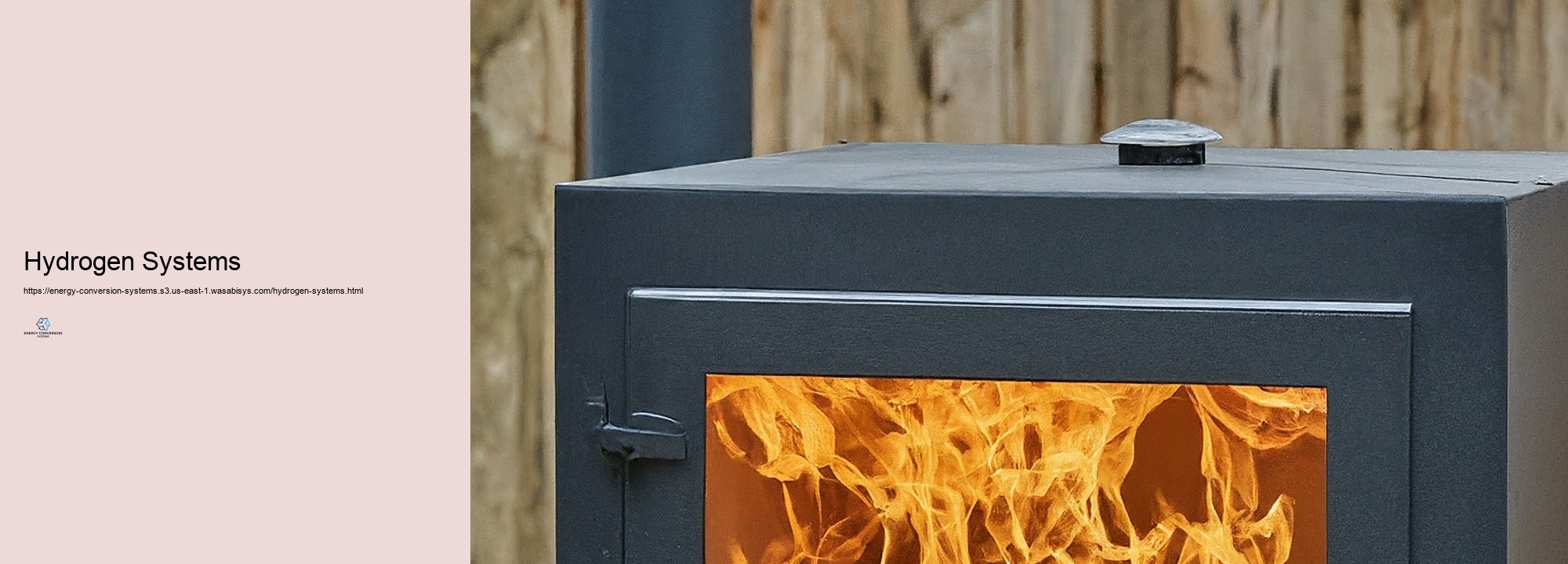
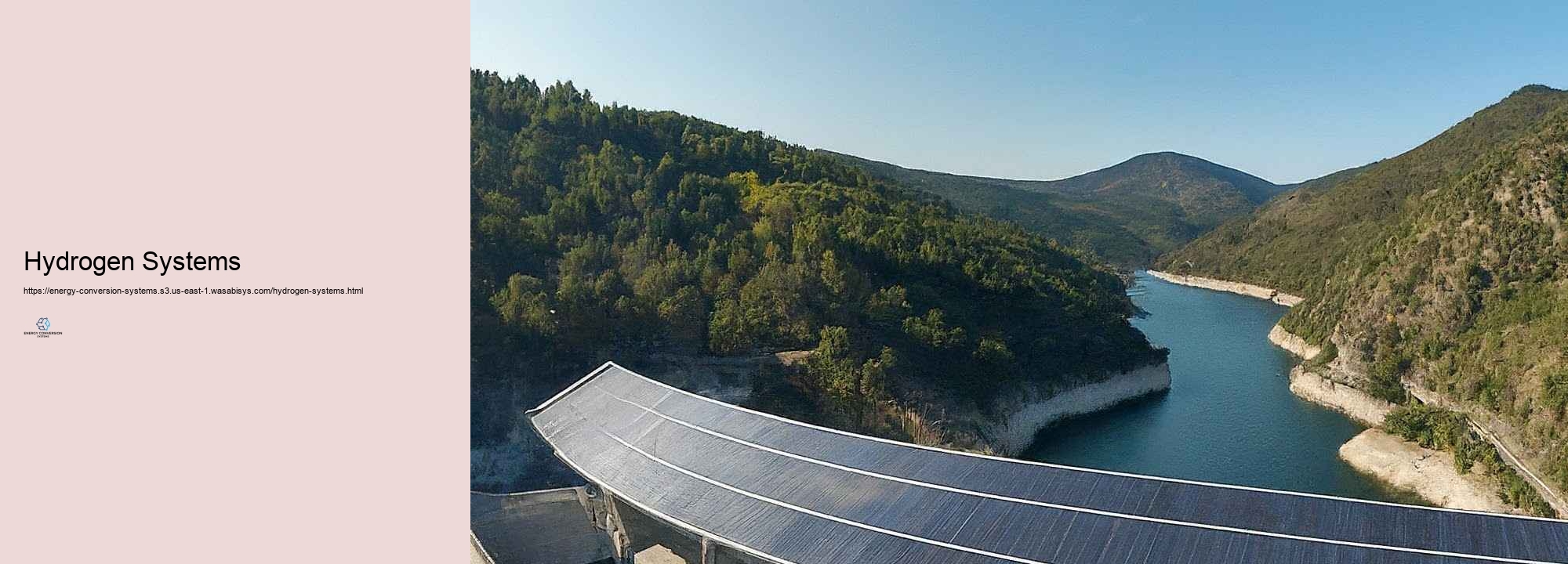
Improving efficiency in energy conversion is a vital goal in the mission of lasting and affordable energy manufacturing. As global energy need continues to climb, enhancing the efficiency of energy conversion treatments has wound up being gradually essential for reducing resource intake, reducing ecological influences, and ensuring energy protection. This undertaking incorporates a vast array of techniques and innovations throughout various energy sectors, from traditional fossil fuel-based systems to renewable resource technologies. Among the essential locations of focus for enhancing energy conversion performance remains in thermal power plants, which continue to be a substantial resource of electric energy worldwide. Advanced shedding technologies, such as supercritical and ultra-supercritical heavy steam cycles, have in fact been created to improve the performance of coal-fired nuclear power plant. Electrochemical Cells These systems run at higher temperature levels and stress than standard plants, allowing for greater thermal efficiency and decreased fuel usage. Also, combined cycle gas wind turbine (CCGT) plants, which make use of both gas and vapor generators, can obtain performances of as long as 60%, dramatically more than conventional single-cycle plants. Waste warmth recovery systems stand for an additional important approach for enhancing energy conversion effectiveness. In numerous business procedures and power generation systems, a considerable quantity of warmth is shed to the environment. By applying advancements such as natural Rankine cycles (ORC) or thermoelectric generators, this waste warmth can be recorded and traded useful electrical energy. This not simply boosts general system effectiveness yet additionally minimizes the need for added energy input, cause expense cost savings and lessened environmental result. In the world of renewable energy, continual modern technologies are driving improvements in energy conversion efficiency. For solar photovoltaic or pv (PV) systems, advancements in cell style and products have actually led to constant boosts in conversion effectiveness. Multi-junction cells, which make use of numerous layers of semiconductor products to catch various sections of the solar array, have really obtained efficiencies exceeding 40% in research laboratory setups. Arising modern technologies such as perovskite solar batteries expose guarantee for a lot more performance renovations and expenditure decreases in solar power conversion. Wind energy conversion has likewise seen substantial efficiency remodellings with technological technologies. Larger wind generator dimensions, innovative blade formats, and enhanced control systems have increased the ability element of wind ranches. Moreover, the growth of overseas wind modern technology has opened brand-new opportunities for making use of stronger and extra routine wind sources, additionally improving energy conversion performance. In the field of energy storage space, which is essential for taking care of the intermittency of renewable energy resources, various strategies are being went after to improve effectiveness. Advanced battery technologies, such as solid-state batteries and flow batteries, supply the prospective for greater energy thickness, quicker payment rates, and a lot longer life-spans contrasted to standard lithium-ion batteries. These enhancements can result in a whole lot more reliable energy storage area and circulation systems, decreasing losses in the energy conversion chain. Hydrogen production and gas cell modern technologies represent another location of modern technology in energy conversion performance. While typical hydrogen making via vapor methane changing is fairly inadequate, brand-new techniques such as high-temperature electrolysis and solar thermochemical water splitting show pledge for far more efficient hydrogen making. On the use side, breakthroughs in gas cell modern-day innovation, particularly in proton exchange membrane layer (PEM) gas cells, are increasing the performance of converting hydrogen into electricity for different applications, including transportation and stationary power generation. The idea of cogeneration, or incorporated heat and power (CHP), is a crucial strategy for enhancing overall energy conversion efficiency. By concurrently producing power and valuable heat from a solitary gas source, CHP systems can complete overall efficiencies of as long as 80%, considerably more than various warm and power generation. This strategy is particularly effective in commercial settings and district heater, where there is a consistent need for both electric energy and cozy. Improvements in products clinical research study are playing an important duty in increasing energy conversion efficiency throughout numerous technologies. High-temperature superconductors, as an example, have the possible to substantially decrease energy losses in power transmission and flow systems. In a similar way, the advancement of innovative products for generator blades, solar cells, and gas cells is allowing greater running temperatures, improved durability, and enhanced efficiency in energy conversion processes. The adaptation of artificial intelligence (AI) and artificial intelligence algorithms right into energy systems is one more cutting-edge method to increasing conversion effectiveness. These advancements can take full advantage of the procedure of power plants, renewable energy systems, and grid networks in real-time, changing criteria to make finest use effectiveness based upon existing problems and demand patterns. Anticipating upkeep powered by AI can likewise assist prevent devices failures and keep peak effectiveness, additionally contributing to total system performance. Smart grid technologies and demand-side keeping track of techniques are furthermore important for improving energy conversion performance at the system degree. By making it possible for much better interaction and control in between energy makers and consumers, clever grids can maximize energy distribution, decrease transmission losses, and better incorporate renewable resource sources. Need feedback programs, which incentivize clients to adjustment their energy use based on grid troubles, can help support supply and need a lot more efficiently, reducing the need for much less efficient coming to a head power plants. The concept of energy plunging, where waste energy from one procedure is made use of as input for an added, is obtaining grip as a technique for boosting total system performance. Industrial synergy, where numerous industries exchange energy and sources, displays this technique. As an example, waste heat from a nuclear power plant might be made use of for district home heating or commercial treatments, taking full advantage of the application of energy inputs. Improving the performance of end-use contemporary innovations is also essential for total energy conversion efficiency. This consists of producing additional effective tools, lighting systems, and commercial tools. The comprehensive promoting of LED illumination, for example, has in fact substantially lowered energy usage in the lights field. Likewise, the advancement of additional efficient electric electric motors and variable rate drives has improved energy conversion efficiency in business applications. Improving efficiency in energy conversion is a complicated challenge that require a mix of technical advancements, system-level optimizations, and plan support. From renovations in standard power generation developments to advancements in renewable energy and energy storage space systems, many strategies and developments are being pursued to take full advantage of the performance of energy conversion procedures. As these technologies continue to be to evolve and grow, they will play a crucial responsibility in building a far more sustainable and reliable energy future. The recurring mission of enhanced energy conversion performance not just contributes to ecological sustainability yet furthermore enhances energy security and economic competition in an increasingly energy-dependent world.
The mix of renewable energy sources right into conversion systems is a transformative approach reshaping the international energy landscape. As the globe looks for lasting choices to fulfill increasing energy demands while reducing ecological effects, the feature of renewable energy in conversion systems comes to be seriously vital. This combination entails combining lasting sources such as solar, wind, hydro, and biomass with typical energy systems to generate hybrid systems that improve energy manufacturing, improve efficiency, and lower carbon exhausts.
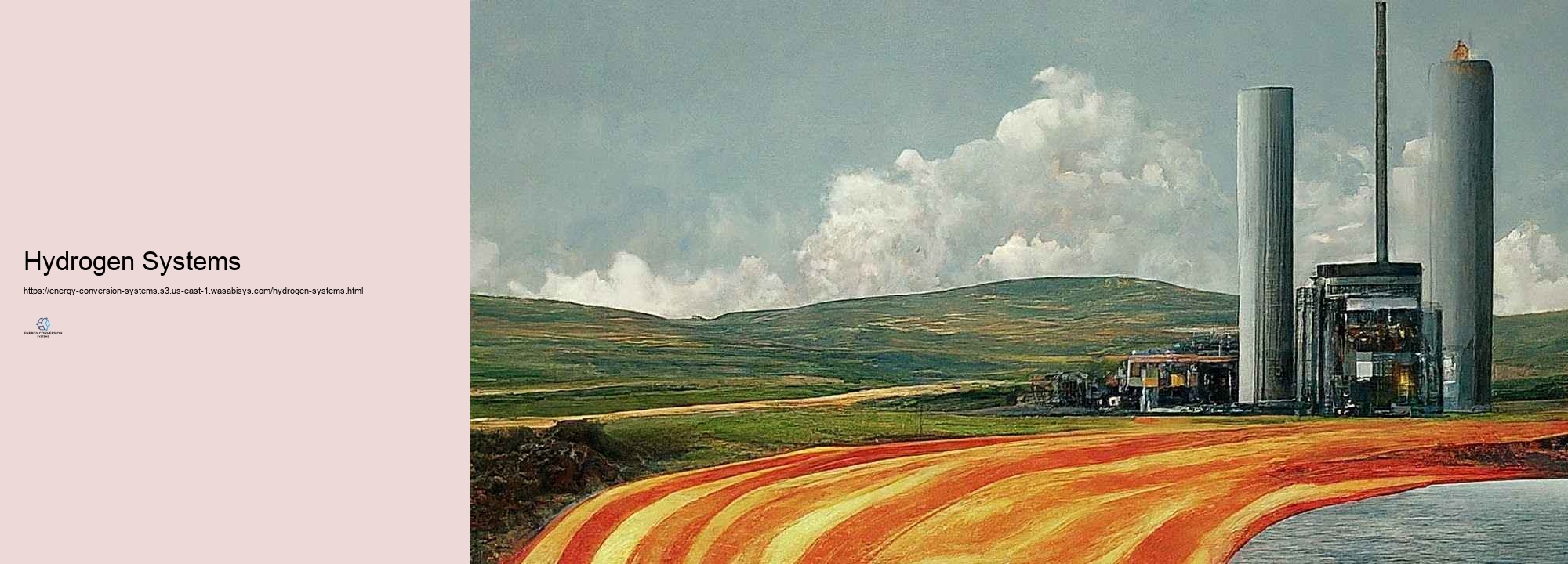
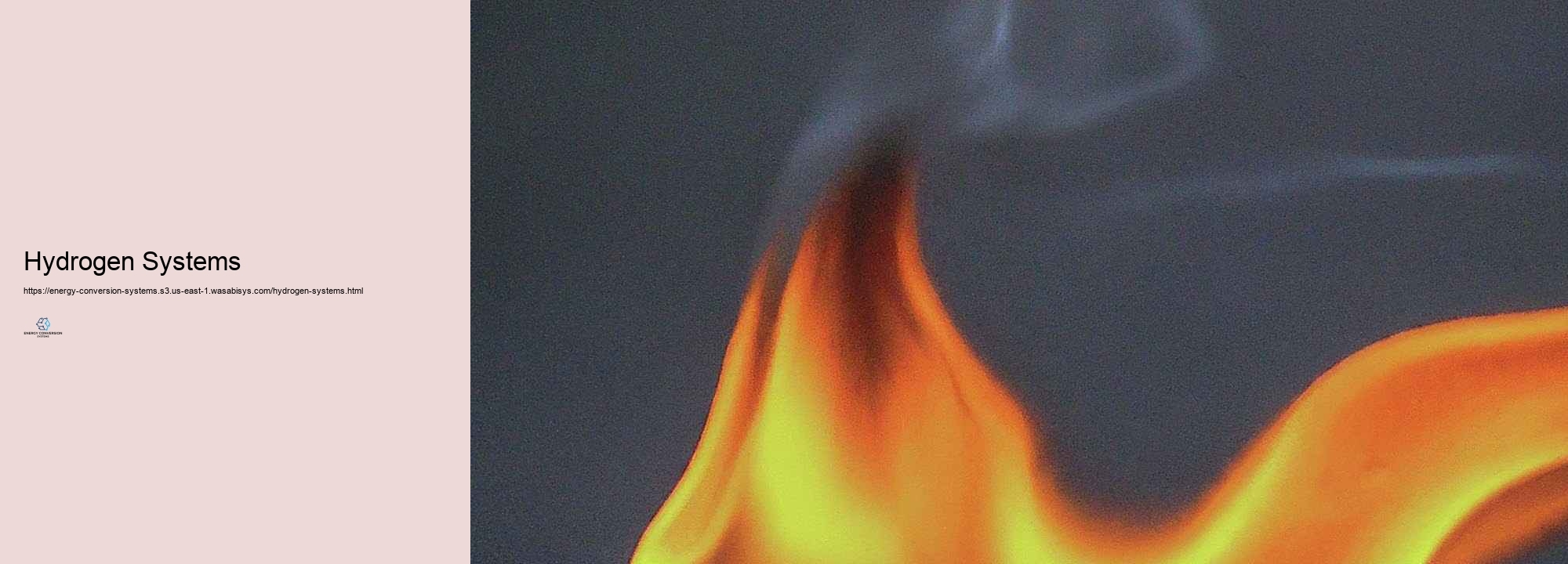
Energy conversion system layout is a challenging area that manage numerous challenges in the goal for a great deal more effective, lasting, and cost-effective treatments. As international energy demands continue to be to boost and ecological concerns increase, developers and scientists are tasked with establishing cutting-edge methods to remove these difficulties. This summary uncovers the essential difficulties in energy conversion system style and the emerging choices that are creating the future of energy advancement. Amongst the key difficulties in energy conversion system design is enhancing efficiency. All energy conversion procedures consist of some degree of energy loss, as figured out by the regulations of thermodynamics. For thermal systems, such as nuclear reactor, this inefficiency is generally appeared as waste warm. Resolving this problem demands a facility approach. Advanced products that can withstand greater temperature levels and anxiety are being established, enabling a lot more trustworthy thermodynamic cycles. As an instance, supercritical and ultra-supercritical hefty steam cycles in coal-fired nuclear power plant can acquire higher efficiencies by running at extremely warms and stress. In inner combustion engines, modern technologies in burning chamber style, fuel injection systems, and exhaust gas recirculation are pushing the restrictions of efficiency. Another significant difficulty is the intermittency and variability of renewable energy sources. Solar and wind power, while tidy and significantly cost-competitive, are not constantly available. This abnormality poses challenges for grid stability and dependability. Solutions to this difficulty consist of the growth of innovative energy storage space systems, such as grid-scale batteries, pumped hydro storage, and occurring technologies like flow batteries. Additionally, the layout of crossbreed systems that include various energy sources (e.g., solar-thermal crossbreed plants) can aid alleviate the intermittency concern. Smart grid advancements and requirement action systems are additionally being created to much better take care of the balance between variable supply and demand. Ecological influence is a vital consideration in energy conversion system layout. Reducing discharges, specifically from fossil fuel-based systems, is a major problem. Solutions consist of the growth of carbon capture and storage space (CCS) modern technologies, which mean to capture carbon dioxide tires prior to they go into the setting. Advanced melting contemporary technologies, such as oxy-fuel combustion and chemical looping combustion, are being researched to facilitate far more efficient carbon capture. For renewable resource systems, challenges include reducing the environmental impact of producing treatments and handling problems like wild animals security in wind farm design. Scalability and cost-effectiveness existing continual barriers in energy conversion system design. Several encouraging advancements that feature well in laboratory settings experience issues when scaled as high as commercial levels. As an instance, fuel cells have in fact revealed wonderful feasible for reputable energy conversion, nevertheless obstacles in scaling up production and reducing expenditures have restricted their widespread fostering. Solutions include study right into brand-new products and making procedures to minimize rates and boost strength. In addition, modular style approaches are being found to help with much less difficult scaling and personalization of energy systems. The combination of different energy conversion systems poses one more significant difficulty. As the energy landscape ends up being additional varied, with a mix of common and lasting sources, making systems that can work together efficiently comes to be essential. Solutions consist of the development of innovative control systems and power digital devices that can care for the intricacies of including various energy sources. Digital nuclear power plant principles, which accumulated and coordinate distributed energy sources, are ending up being a service to this adaptation challenge. Product restraints present recurring challenges in energy conversion system layout. Lots of innovative energy innovations need uncommon or pricey products, which can restrict their scalability and economic viability. For example, some high-efficiency solar cells rely on uncommon planet facets. Solutions to this barrier include research right into alternate materials, such as earth-abundant facets for solar batteries, and the growth of reusing advancements to recover and reuse vital items from deactivated systems. Thermal keeping track of is a crucial challenge in a number of energy conversion systems. Effective air conditioning is necessary for maintaining efficiency and long life, specifically in high-temperature applications like gas wind turbines or focused solar power systems. Solutions contain advanced air conditioning innovations, such as closed-loop steam cooling for gas wind generator blades, and the innovation of new products with much better heat-resistant homes. In electronic systems, developments in heat sink design and making use of phase-change materials for thermal management are being discovered. Energy storage space remains a considerable obstacle, particularly for applications calling for high energy density or quick charge/discharge cycles. While lithium-ion batteries have seen considerable remodellings, they still experience limitations in energy thickness and cycle life. Solutions being discovered contain the development of solid-state batteries, which guarantee greater energy thickness and improved security and safety, and research study right into one-of-a-kind chemistries like lithium-sulfur or lithium-air batteries. For grid-scale storage space, circulation batteries and sophisticated mechanical storage room systems (like pressed air energy storage) are being developed. The challenge of system honesty and maintenance is important, particularly as energy systems ended up being a whole lot even more difficult and dispersed. Making certain lasting reliability while lessening upkeep needs is vital for the financial usefulness of energy conversion systems. Solutions include the development of cutting-edge security and evaluation systems, commonly leveraging professional system and machine learning formulas to anticipate and avoid failings. The concept of self-healing systems, which can instantly locate and solve small problems, is furthermore being had a look at. Versatility in energy conversion systems is winding up being progressively essential as energy grids develop. Systems require to be able to respond promptly to modifications popular and supply, specifically with the improving infiltration of variable renewable resource sources. Solutions consist of the development of more versatile thermal power plants that can increase and down rapidly, using energy storage room systems to offer grid services, and the execution of demand responses innovations that can change energy usage based on grid problems. The area of energy conversion system design encounters various problems in the search of a lot even more effective, lasting, and reliable energy services. Nevertheless, these problems are driving development throughout a vast array of developments and approaches. From innovative items and unique system designs to the assimilation of digital contemporary technologies and clever control systems, the solutions being developed are not simply resolving present obstacles yet furthermore leading the way for the future generation of energy conversion systems. As {research and development continue, these solutions assure to improve the worldwide energy landscape, moving us in the direction of a far more lasting and efficient energy future.
The impact of energy conversion systems on eco-friendly sustainability is profound and multifaceted, influencing every little thing from greenhouse gas wears down and source shortage to eco-friendly neighborhood wellness and biodiversity. As the worldwide need for energy continues to climb, driven by populace growth and economic development, the demand for lasting energy services winds up being progressively urgent. Energy conversion systems, which adjustment raw energy sources into usable kinds such as electrical power, warmth, and gas, play an essential duty in this change. By checking out the ecological impacts of various energy conversion technologies, we can much better comprehend their settlements to sustainability and recognize pathways for enhancement. Conventional energy conversion systems, particularly those depending on nonrenewable fuel sources such as coal, oil, and natural gas, have traditionally been substantial factors to environmental deterioration. The burning of these gas launches significant amounts of co2 (CARBON DIOXIDE) and various other greenhouse gases right into the atmosphere, driving atmosphere change and its associated influences, such as rising international temperature level degrees, sea-level boost, and serious environment occasions. Furthermore, fossil fuel elimination and processing can bring about atmosphere damage, dirt and water contamination, and air contamination, better getting worse ecological difficulties. Hydrogen Systems On the other hand, renewable resource conversion systems, such as solar, wind, hydroelectric, and geothermal, supply a lot more sustainable alternatives by taking advantage of natural energy moves that are plentiful and replenishable. These systems generally produce little to no straight tires throughout procedure, substantially reducing their carbon footprint contrasted to fossil fuel-based technologies. As an example, solar photovoltaics and wind generators produce electrical power without shedding gas, staying clear of the launch of CARBON DIOXIDE and various other toxins. Hydroelectric power, while mostly emission-free throughout procedure, must be really thoroughly taken care of to decrease prospective ecological impacts, such as changes in water circulation and fish activity patterns. The change to renewable resource conversion systems is important for accomplishing ecological sustainability, as it straightens with campaigns to lessen greenhouse gas discharges and limitation global warming up. By transforming fossil fuel-based systems with renewables, we can reduced the concentration of CARBON DIOXIDE in the setting, minimizing the progression of climate modification and its destructive results on eco-friendly communities and human cultures. Moreover, renewable energy systems typically require a lot less land and water than traditional energy sources, lowering their general environmental impact and shielding all-natural environments. However, the release of renewable energy conversion systems is not without its obstacles. The manufacturing, setup, and upkeep of these systems can have ecological affects, consisting of source removal, waste generation, and land utilize modifications. For instance, the manufacturing of solar panels includes using unusual and minimal items, such as silicon and silver, along with perhaps dangerous chemicals. Wind generator production requirements significant amounts of steel and concrete, and their installation can influence neighborhood wild animals and landscapes. To take care of these troubles, it is needed to handle lasting methods throughout the lifecycle of renewable energy systems, from style and production to shutting down and reusing. Energy storage space systems, which are necessary to the efficient adaptation of renewable energy right into the grid, additionally have eco-friendly impacts. Batteries, for example, rely on materials like lithium, cobalt, and nickel, the removal and refining of which can bring about environmental destruction and social obstacles. Developing a whole lot more lasting battery innovations, such as those based on bountiful and non-toxic products, and improving recycling procedures are important activities in the direction of reducing the eco-friendly influence of energy storage room. Past discharges and source usage, energy conversion systems can also influence ecological sustainability using their outcomes on biodiversity and environments. Substantial energy jobs, whether lasting or fossil-based, can bring about setting fragmentation, wildlife variant, and alterations in land usage patterns.
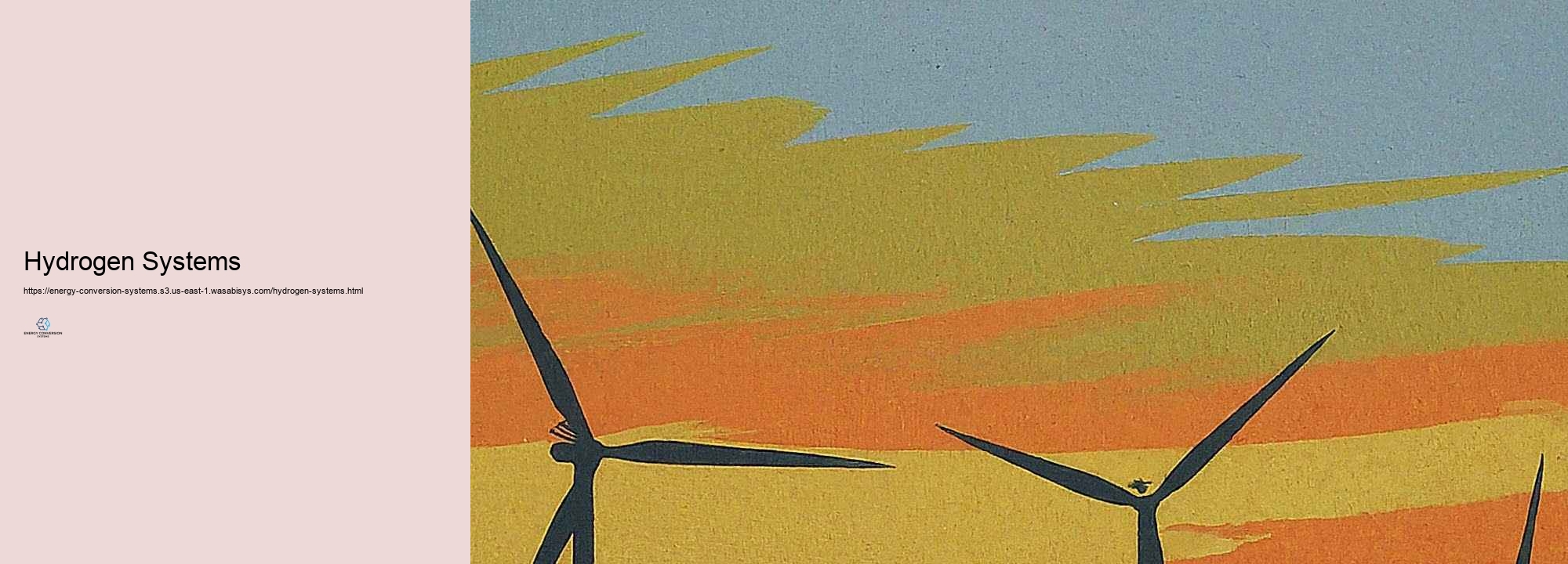
Energy conversion systems are technologies or processes that transform one form of energy into another, such as converting solar energy into electricity or mechanical energy into electrical energy.
Common types of energy conversion systems include solar photovoltaic panels, wind turbines, fuel cells, hydroelectric power systems, and geothermal energy converters.
Energy conversion systems improve efficiency by optimizing the process of converting energy from one form to another, reducing waste, and enhancing the overall output of usable energy.
Energy conversion systems are crucial in renewable energy as they enable the transformation of natural energy sources like sunlight, wind, and water into electricity, supporting sustainable power generation.
Challenges include optimizing efficiency, minimizing energy loss, integrating with existing grids, managing costs, and ensuring reliability and sustainability of the energy sources used.